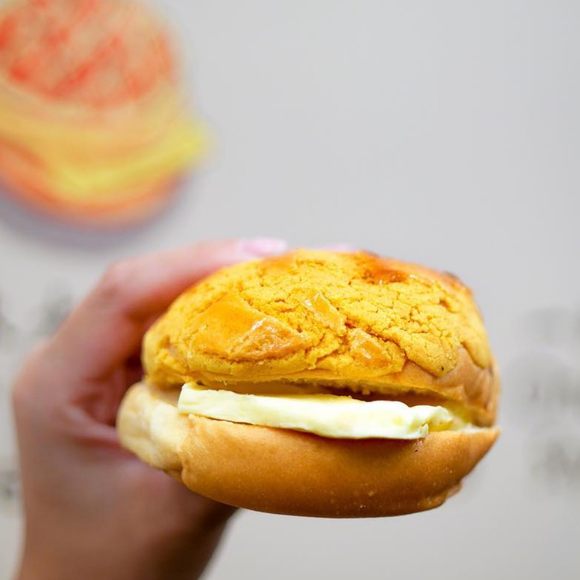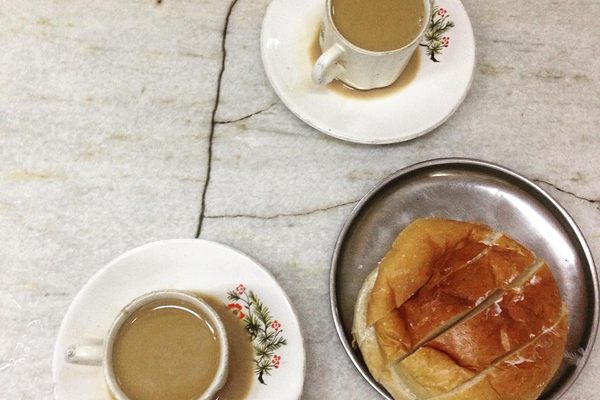There comes a moment in many Chinese children’s lives when they realize that bo lo bao (“pineapple bun”) contains no pineapple. It’s not as if the bread tastes or smells like pineapple, but it is sweet and yellow.
The top-crusted soft bun is a staple at Chinese bakeries across Hong Kong. Many diners eat the pastry with a fat slice of butter sandwiched in the middle, a pairing known as bo lo yau. Local lore says the name derives from the pattern of the sweet, egg yolk topping. To some, it resembles the tropical fruit’s textured exterior. Most think the comparison is a stretch.
Despite its misleading name, residents and visitors alike flock to the bun as a breakfast or afternoon snack. Bakers’ liberal use of butter and custard powder gives the treat its smooth texture and shiny, golden hue. The latter additive, a British import, imparts a sweeter, milky-vanilla flavor. Cha chaan tengs, round-the-clock “tea restaurants” that serve comfort food, further highlight the region’s stint as British colony by serving the buttery bun with Hong Kong–style milk tea.
The pineapple bun peaked in popularity between the 1940s and 1960s. To meet demand, urban bakeries produced up to 3,000 rolls a day, accounting for the majority of their revenue. Today, bakeries are producing about one third of that amount, but the bun is still an important feature of Hong Kong cuisine. In 2014, the government declared the process of making bo la bao as a piece of “intangible cultural heritage.”
Once only a dime, a pineapple bun now costs 45 to 75 cents. One larger source of related revenue: an animated movie called McDull, The Prince of the Pineapple Bun With Butter. Released in Hong Kong in 2004, the film centers around an animated pig who wears the bread as a hat. Any press is good press, right?
Where to Try It
-
Hong Lin Restaurant
Tung Choi St, 143-145, Mong Kok, ChinaThis central eatery serves Hong Kong's late-night crowd pineapple buns and milk tea until 3 a.m.
-
Delicious Food Corner
2329 Garfield Ave S, Monterey Park, California, 91754, United StatesThe cash-only cafe serves Hong Kong-style eats; pineapple buns with milk coffee or tea are a highlight.
Written By
 rachelrummel
rachelrummel
Sources
- thewoksoflife.com/2015/04/pineapple-buns/
- travel.cnn.com/hong-kong/eat/hong-kongs-best-bun-196846/
- www.scmp.com/news/hong-kong/article/1587246/secrets-behind-serving-hong-kongs-hot-cross-buns
- sina.com.hk/p/entertainment/movie/detail/1229?cf=o.ent
- dessertfirstgirl.com/2015/09/pineapple-buns-bolo-bao.html
- www.chinadaily.com.cn/hkedition/2011-04/28/content_12408625.htm

















